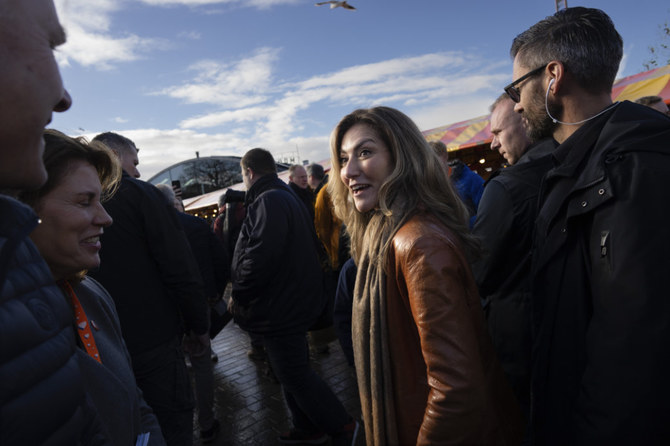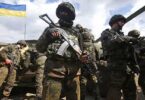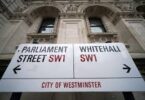Andrew Hammond
The phrase “double Dutch” is sometimes defined as language that is unintelligible. That phrase seems an apt description of the upcoming election in the Netherlands, the outcome of which is hugely difficult to decipher.
This matters given the stakes in play. For one, the Netherlands has the fifth-largest economy in the EU, and is an influential player on the world stage in wide-ranging policy debates. For instance, the Netherlands was the first non-G7 country to negotiate bilateral security commitments with Ukraine. It took the lead last summer, along with Denmark, in moving toward donating F16 aircraft to Kyiv, and setting up a training center in Romania.
The election is also important as it may well give a good indication of the bloc’s political mood going into next year’s big European Parliament election year. Other recent polls have shown a rightward drift across the continent, although last month’s Polish vote saw Donald Tusk’s centrist coalition potentially winning power.
The Nov. 22 Dutch ballot is taking place in the aftermath of the collapse of the fourth coalition government of Prime Minister Mark Rutte, the EU’s second-longest serving leader after Hungary’s Viktor Orban. This is leaving a political vacuum, with Rutte potentially moving to a big international job, possibly as the next NATO secretary general.
The context, too, is the recent history of the rise of the far right in the Netherlands. Today, it is the Freedom Party of political maverick Geert Wilders that tends to get most media coverage on the political far right. It is plausible that Wilders could become a coalition kingmaker if there is a big swing to conservative and anti-establishment parties. While Wilders is the far-right man of the moment, others of a similar ilk have previously made their mark in the nation’s political discourse, including anti-immigrant populist Pim Fortuyn, who was assassinated in 2002.
In this context, there has been much Dutch political volatility in recent years, which was most recently showcased by the success of the populist Farmer-Citizen Movement, or BBB. Formed in 2020, the pro-farmer political party topped the Dutch provincial elections in March, yet its forecast vote share has since fallen from over 20 percent to well below 10 percent.
Driving this political turbulence is the collapse of the Dutch political center ground, as has been the case in several other European polities. Parties of the center-right and left have seen their vote share fall off a cliff to around 40 percent today from double that figure in the 1980s.
The latest signal of the volatility that this political vacuum has left is that a three-month-old party, the New Social Contract, has topped some recent opinion polls. The spectacular rise of the NSC reflects popular discontent with a series of government scandals.
NSC leader Pieter Omtzigt left Rutte’s last government in 2021 after helping expose a welfare scandal that brought down the administration. Tax authorities had wrongly denied child benefit payments to more than 20,000 families, incorrectly accusing them of fraud.
This anti-government sentiment has also helped turn the political agenda in a more populist direction. One example is fiscal policy. The Dutch are traditionally known in Europe for their fiscal caution, yet the current Rutte coalition has overseen the most expansionary set of policies in the country’s modern history. Moreover, election manifesto plans of the key parties point to the likelihood of a continued expansionary fiscal policy that follows the trajectory of the outgoing coalition.
Another good example is the green transition, and who will pay for it, in a nation which is the world’s second-largest agricultural exporter. One specific issue that has surfaced during the campaign is over nitrogen emissions. Under a Dutch law introduced by Rutter, nitrogen emissions have to be reduced by 50 percent by 2035, a deadline the prime minister has proposed to bring forward to 2030.
Farmers, a powerful political bloc, as the BBB underlined earlier this year, have expressed concerns, as livestock manure and chemical fertilizers are big emitters. Transport and broader industry are also key emitters of nitrogen oxides.
The politics of this issue has forced even former European Commission Green Deal and climate chief Franz Timmermans onto the defensive. Currently leader of the green-left bloc ahead of the upcoming ballot, Timmermans has recently made a big U-turn on this question.
This is politically embarrassing for the former EU commissioner, who is campaigning on a pro-green agenda. His platform includes plans to reduce Dutch greenhouse gas emissions by 65 percent by 2030, significantly beyond the 55 percent EU target.
Within this cauldron of discontent, the outcome of the election is highly uncertain given the tightness of polls. Three main party blocs — the NSC; Rutte’s People’s Party for Freedom and Democracy, now led by Dilan Yesilgoz-Zegerius; and Timmerman’s Green-Labour alliance, are seeking to make a polling breakthrough.
However, this is complicated by the Dutch proportional voting system, which means that the Netherlands has seen only coalition governments for over 100 years. No party may win more than 20 percent of the vote (or 30 of 150 seats) in the context of a splintering of smaller parties. About 20 parties have seats in the current legislature, and more than two dozen are running this time, with any party that wins 0.67 percent of the vote assured of winning a seat.
The other key consequence of this hyper-fragmentation is that the eventual coalition may take months to form. Rutte’s last coalition took a remarkable 271 days to establish, and this means he may have to remain caretaker prime minister well into next year.
All things considered, the Dutch election is one of the most unpredictable polls in the nation’s recent politically volatile history. One risk is that a weak government ultimately emerges that turns the traditionally outward-looking country more inwards at a time of growing geopolitical tension.







